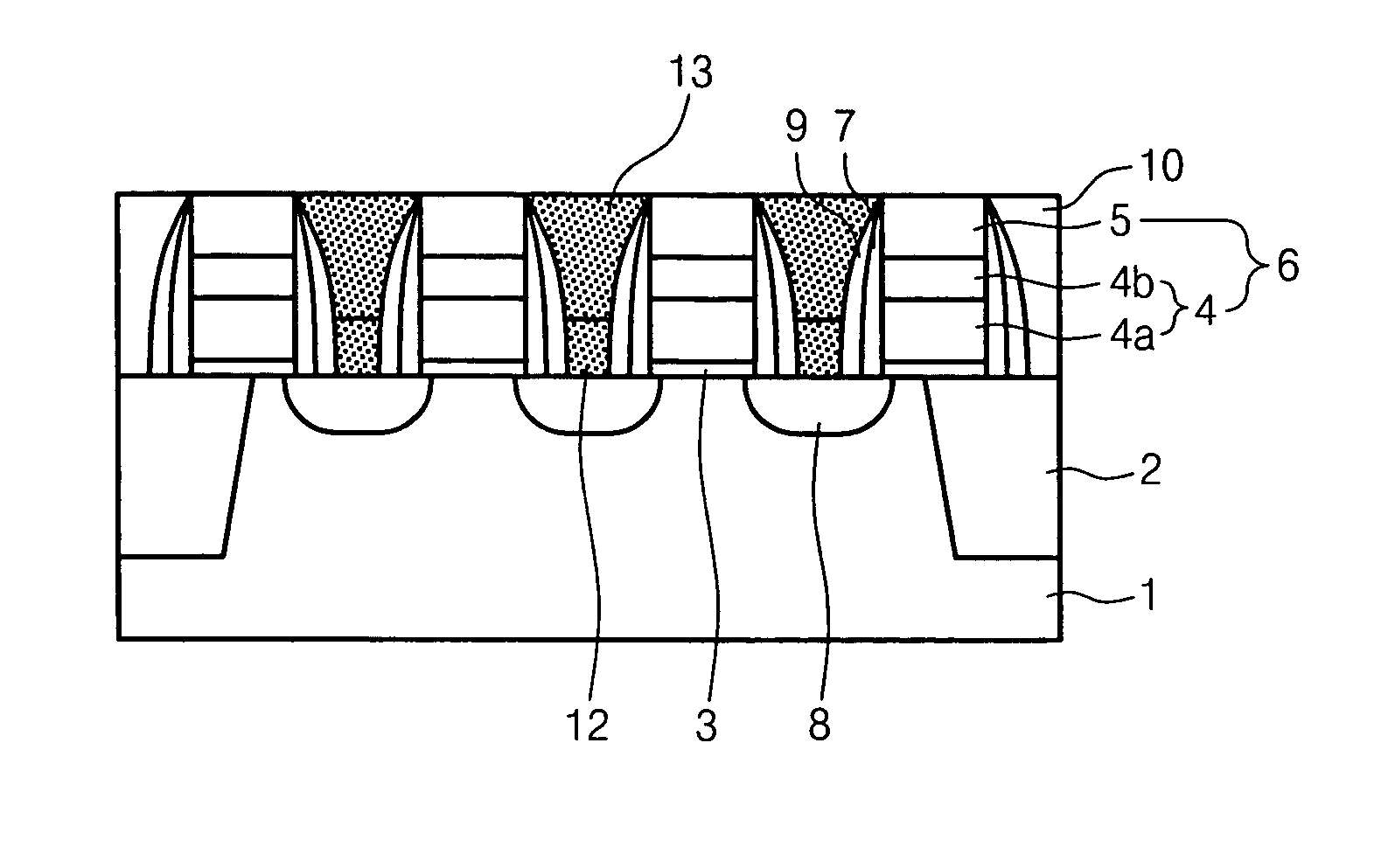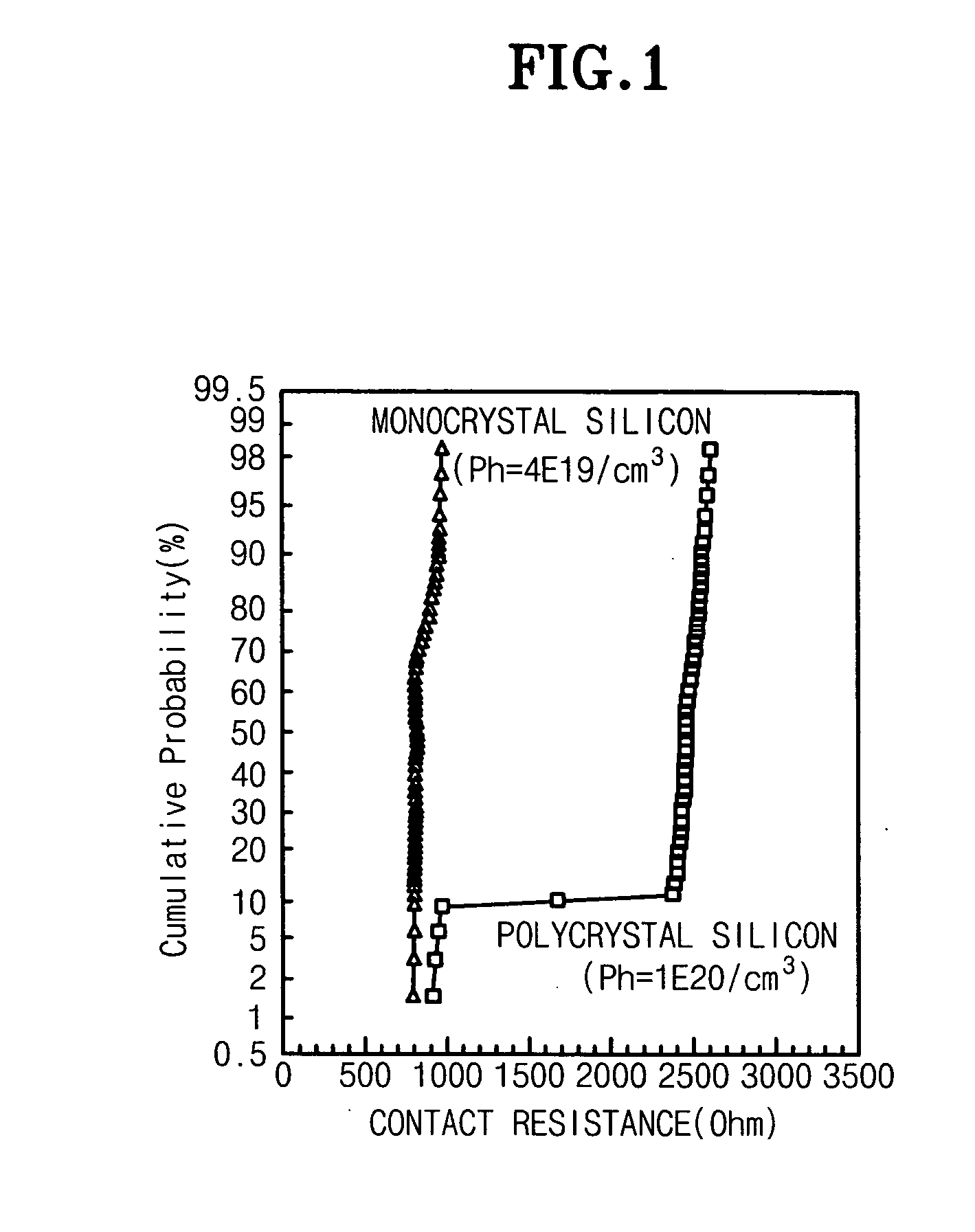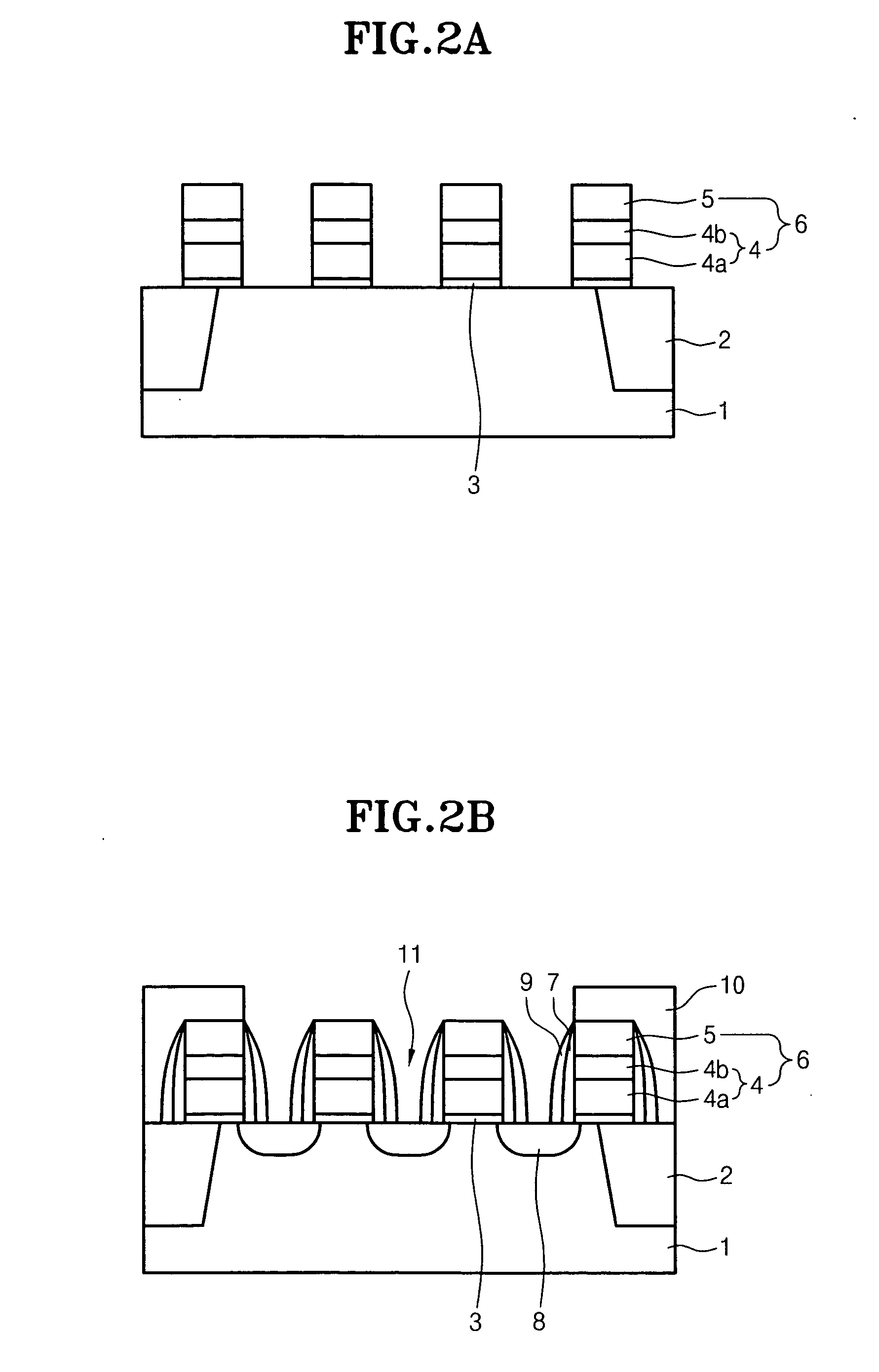Method for forming contact plug of semiconductor device
- Summary
- Abstract
- Description
- Claims
- Application Information
AI Technical Summary
Benefits of technology
Problems solved by technology
Method used
Image
Examples
Embodiment Construction
[0035] Hereinafter, a preferred embodiment of the present invention will be described with reference to the accompanying drawings. In the following description and drawings, the same reference numerals are used to designate the same or similar components, and so repetition of the description on the same or similar components will be omitted.
[0036] According to the present invention, epitaxial silicon is formed as contact material, i.e., as cell contact landing plug material. In order to form epitaxial silicon, a solid-phase epitaxy (hereinafter, referred to as SPE) method is used wherein amorphous silicon having a suitable range of phosphorus (P) needed by a device at low temperature is deposited on a contact interface, which has been subject to selective pre-cleaning, and epitaxial silicon is subsequently formed through re-crystallization annealing at low temperature. The present invention also makes it possible to stabilize the growth of epitaxial silicon by obtaining a contact i...
PUM
 Login to View More
Login to View More Abstract
Description
Claims
Application Information
 Login to View More
Login to View More - R&D
- Intellectual Property
- Life Sciences
- Materials
- Tech Scout
- Unparalleled Data Quality
- Higher Quality Content
- 60% Fewer Hallucinations
Browse by: Latest US Patents, China's latest patents, Technical Efficacy Thesaurus, Application Domain, Technology Topic, Popular Technical Reports.
© 2025 PatSnap. All rights reserved.Legal|Privacy policy|Modern Slavery Act Transparency Statement|Sitemap|About US| Contact US: help@patsnap.com



